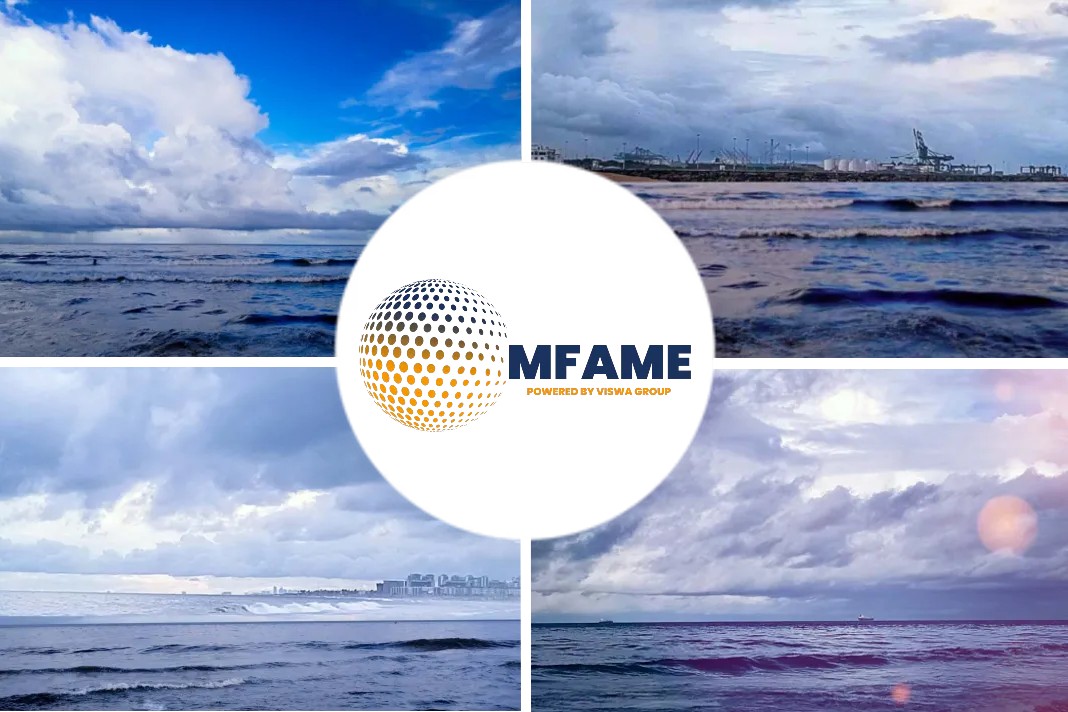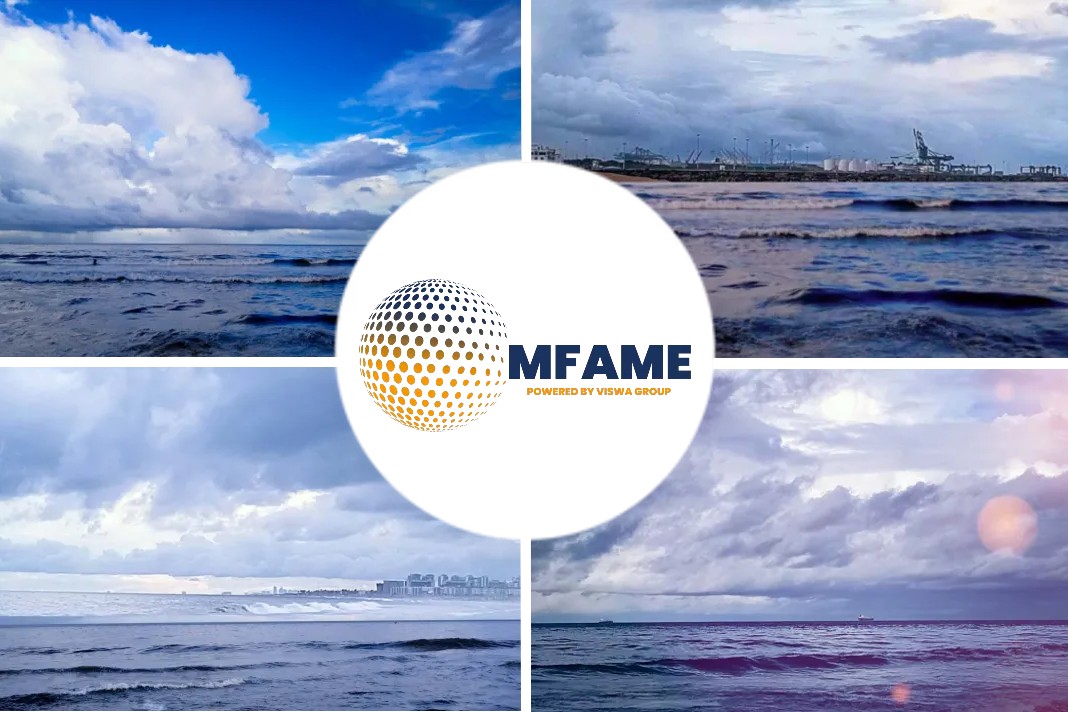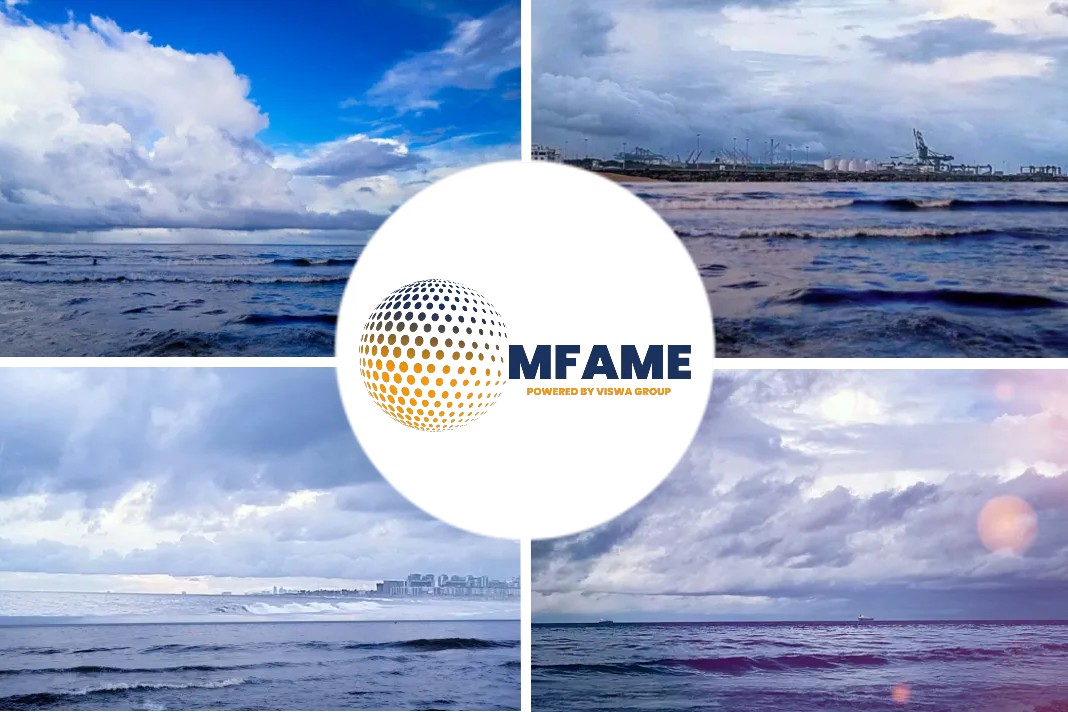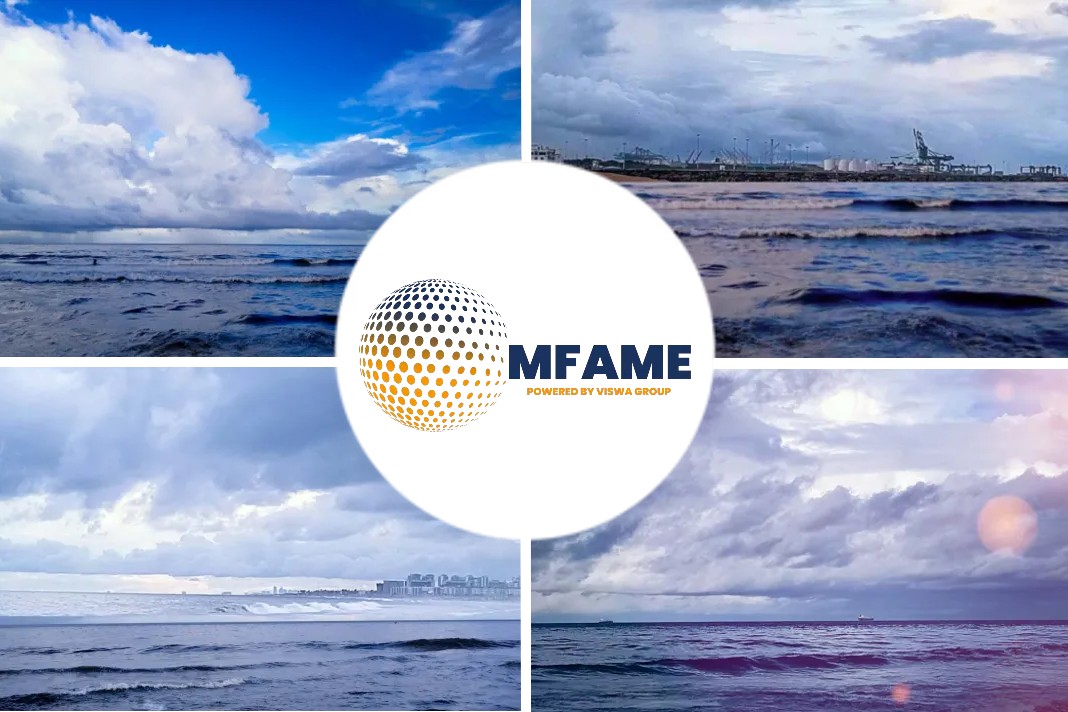 Despite the abundance of crude oil on its doorstep, the Norwegian tanker fleet is mainly engaged in the deep sea, long-haul trades. Norway is a major producer of North Sea oil but surprisingly this ‘home trade’ does not register as a prominent activity for Norwegian owned and operated tankers. In fact, the largest activity undertaken by Norwegian tanker operators in 2018 was the 28Bn deadweight nautical ton miles covered in the Brazilian sector, likely consisting of regional shuttle tanker traffic, reports Tanker Shipping.
Despite the abundance of crude oil on its doorstep, the Norwegian tanker fleet is mainly engaged in the deep sea, long-haul trades. Norway is a major producer of North Sea oil but surprisingly this ‘home trade’ does not register as a prominent activity for Norwegian owned and operated tankers. In fact, the largest activity undertaken by Norwegian tanker operators in 2018 was the 28Bn deadweight nautical ton miles covered in the Brazilian sector, likely consisting of regional shuttle tanker traffic, reports Tanker Shipping.
Norwegian Tanker Activities
- The second-largest activity involved trade between the USA and South Korea, which accounted for nearly 21Bn deadweight nautical miles;
- third was the ton-miles of demand between Angola and China at 12.33Bn.
- Combined, this activity highlights the depth of Norwegian tanker operators’ cross-trading activities.
- Of course, there are still a significant amount of deep sea crude oil tanker trades taking place within Norwegian waters. Recall the 2018 collision between the 2017-built, 112,700-dwt Tsakos Energy Navigation Aframax tanker Sola TS and a Norwegian frigate off the island of Øygarden near the Sture oil terminal in Norway in the early hours of 8 November.

KNM Helge Ingstad – no match for a heavily-laden Aframax
The Østensjø Rederi-operated tugboat Tenax was escorting Sola TS at around 0400 hours, local time, when the incident occurred. The tug was not involved in the collision. The frigate KNM Helge Ingstad was returning from a military exercise in the area, according to the Norwegian Navy. KNM Helge Ingstad is one of five US$400m Nansen-class frigates in operation. Local press reports claimed the frigate had the AIS switched off, was travelling at 17 knots and did not respond to repeated warnings broadcast by Sola TS, which was also in contact with the vessel traffic control office. After an investigation by the local authorities, Sola TS was cleared to proceed while the KNM Helge Ingstad was deliberately grounded and later sank.
This could have been a pollution incident on par with the Exxon Valdez in terms of quantities and the unspoilt environmental location. It would have certainly hardened Norway’s already negative attitude to hydrocarbons – electric car sales grew by 40% in Norway in 2018 and one in three cars is a zero-emission vehicle. But the fact remains that Norway, like other crude oil producer nations, is very dependent on the price of crude oil.
Re-conceptualizing Norwegian maritime
Peak oil demand will have a significant impact in Norway and this issue was recognized early on by Professor Torger Reve, who saw the low oil price in recent years as a clear call to the Norwegian cluster to diversify. Professor Reve was instrumental in establishing Norway as a global maritime knowledge hub in the late 2000s. Writing in 2016, he called for a “wave of innovation, with knowledge from the oil and gas industries to be applied in other ocean industries” and said, “when activity levels fall in our most important industry, we need to look for new strategic opportunities in related industries.”
“What we see now is a re-conceptualization of the Norwegian industrial space, from traditional maritime and offshore oil and gas industries to the much broader ocean industry concept,” he added.
“When activity levels fall in our most important industry, we need to look for new strategic opportunities in related industries”
Present Situation in Norwegian Cluster
Now the Norwegian cluster and the regional sub-clusters are chock full of examples of Professor Reve’s wave of innovation, with private industry, public bodies and educational institutions working together to meet the ocean industry challenge.
As well as its maritime heritage and established expertise in the shipping, offshore energy and fishing sectors, one of Norway’s biggest strengths is summed up in a phrase heard many times when talking to Norwegian businesspeople: “We co-operate when we can and compete when we must.” Such an attitude encourages the sharing of knowledge and expertise which benefits all parties involved and wider society.
1. Stolt As a Chemical Tanker Operator
As a chemical tanker operator, the Stolt fleet is smaller in size compared to its crude oil brethren. Nonetheless, Stolt Tankers is still the third largest operator of Norwegian tonnage in terms of deadweight (2.11M dwt), after SKS Tankers (2.15M dwt) and Nordic American Tankers (3.15M dwt).
- Stolt Tankers is the largest Norwegian owner by the value of tankers (US$1.3Bn), but the company is also numerically the largest, with 88 such vessels.
- Stolt recently released its Q1 2019 financial figures, highlights of which included an operating profit of US$14.3M, up from $7.7M in Q4 2018.
- This largely reflects a US$3.4M bunker-hedge gain in the first quarter, compared with a $4.1M losses in the fourth quarter.
- Stolt Tankers also noted that its Joint Service Sailed-in Time-Charter Index was unchanged at 0.53 points.
2. Odfjell 2nd Largest Tanker Operator
The second largest Norwegian tanker fleet in numerical terms is that of Odfjell. In November 2017, Odfjell SE and Sinochem agreed to form and manage a fully stainless-steel pool of eight chemical tankers of 40,900 dwt, each with 30 tanks. Four vessels will be owned by Sinochem Shipping and the other four will be on long-term bareboat charters, which include purchase options at the end of the charter period.
Odfjell’s financial results for 2018 revealed the impact of IFRS 16 on tanker operators and the company’s expectations for the post-IMO 2020 global marine fuel sulphur cap environment.
IFRS 16 requires lessees to capitalise all leases (with a few exemptions), where the lessees have specific control, such as a charter which states the charterer has the right to direct operations of the asset. In the case of shipping, the definition of control would cover most aspects of a bareboat charter, time charters, and pool arrangements (where the pool is the lease) effectively putting that charter onto the balance sheet of the charterer.
This is likely to change the behaviour of charterers. They will have to recognise a long-term charter under IFRS 16 or find a way to adapt to IFRS 16 that is compatible with their business model. IFRS 16 came into force on 1 January 2019 and would generally be first reported in accounts for 2019 announced in 2020, but companies can choose to introduce the standard early to give shareholders an indication of the impact of IFRS 16 on the bottom line.
- Which is what Odfjell chose to do when presenting its 2018 accounts, which show that its equity ratio will reduce by 3% to 30% due to more debt appearing on the balance sheet.
- However, ratios using EBITDA, such as enterprise value/EBITDA, will improve, as in the case of Odfjell where the ratio changed from 11.5 to 6.6 post-IFRS 16.
- Odfjell has also analysed the impact of IMO 2020 on its bunker expenses.
- In 2018 the company spent an average of US$42M per quarter on bunkers.

Source: VesselsValue
Healthy competition
The third most numerous Norwegian tanker fleet is that of Ocean Yield ASA, which in March 2019 announced it has taken delivery of the 2016-built Suezmax crude tanker Milos. The price was not reported, but in a presentation Ocean Yield noted that a 2016-built Suezmax had been purchased for US$56M with a seller’s credit of US$7M, producing a net purchase price of US$49M.
- The presentation noted that the Suezmax in question was financed by a US$39M bank facility.
- This is believed to refer to Milos, the only 2016-built Suezmax tanker in the Ocean Yield fleet.
- The vessel was built by Sungdong Shipbuilding in South Korea and is a sister vessel to Poliegos, another Suezmax vessel owned by Ocean Yield.
- Milos will commence a 13-year bareboat charter to Okeanis Eco Tankers Corp upon delivery.
- Okeanis Eco Tankers was established in 2018 by the Alafouzos family of Greece to take over its fleet of modern tanker vessels and tanker newbuildings.
- With seven tankers built from 2015 to 2018 and eight VLCCs for delivery in 2019, the company will focus on eco-designed vessels fitted with scrubbers.
- Ocean Yield is listed on the Oslo Stock Exchange Merkur Markets under the ticker OET-ME.
“We co-operate when we can and compete when we must”
Ocean Yield’s Standing
Ocean Yield’s fleet includes the resale of four VLCCs under construction at Hyundai Heavy Industries for the account of Kyklades Maritime, the private company of the Greek Alafouzos family. In June 2018, the group formed the public company Okeanis Eco Tanker which was listed on the Oslo’s Merkur Market and in early 2019 received approval to upgrade to the Oslo Axess stock exchange. Ocean Yield agreed to acquire four VLCC crude tankers with 15-year bareboat charters to companies owned and guaranteed by Okeanis.
- All four vessels are sub-chartered to the shipping arm of Koch Industries for a period of five years.
- The gross purchase price was reported to have been US$83.75M each, including a seller’s credit of US$9.5M, giving a net cash purchase price of US$74.25M.
- The vessels are scheduled for delivery by Hyundai Heavy Industries in Q2-Q3 2019.
- Okeanis has options to acquire the vessels during the charter period, with the first purchase option exercisable after seven years.
Other Norwegian Purchases
Other Norwegian VLCC purchases in 2018 include the three 2002-built Hitachi constructed VLCCs (Front Stratus, Front Page, and Front Serenade) from Ship Finance International by Arendals Dampskibsselskab (ADS) Crude Carriers. ADS is joining DHT and fellow VLCC operator Frontline in lining up scrubber technology for VLCCs. In the case of ADS, it is not clear if the venture is for newbuilding VLCCs, like the Hunter Group, or retrofits to VLCCs already in the water.
ADS was formed in 1857 and has a long a varied history. Today, the company is part of the Cyprus-registered Shiphold Ltd group, along with Seaview Group, OSM Maritime Group and OSM Aviation Group. According to the private placement offer, 2015-registered ADS Crude Carriers AS has formed a fund, ADS Tank II AS, which is listed as managed by Bjørn Tore Larsen. The fund has raised US$58M by private placement.
According to ADS, it and associated companies hold investments in several vessels, including dry bulk carriers ADS Galtesund and ADS Arendal, and four AET Tankers Aframax shuttle tankers (Eagle Barents, Eagle Bergen, HN 2236, and HN 2237). The company also lists an investment in the Aframax tanker ADS Oslo. All the above vessels are managed by OSM. In addition, ADS lists a joint venture with AET Tankers to own and operate four DP2 Aframax shuttle tankers in the North Sea and Barents Sea.
It’s Free! Click here to Subscribe!
Source: Tanker Shipping




















